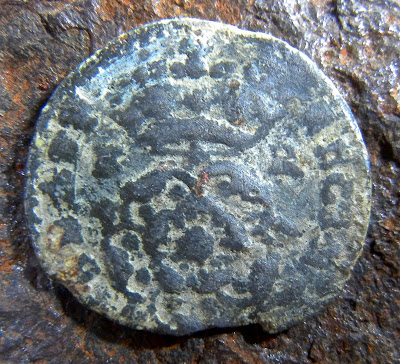Not all collectors believe in magic. Too bad. And, that’s
okay.
We had a spirited (a pun, yes?) debate in our coin club
meeting. I argued – of course – that slabs were bad, bad, bad. I got all manic
about it: You might as well throw out condition grading as well. Who cares if a
coin has been rated as “good” or “fine?”
And who are these raters pretending to be anyway?
I got many rebuttals.
 |
| A case bottle from Jamestown, TPQ 1610. Would a brand new case bottle suffice? |
You can’t sell them. You can’t determine the value. And for
the plastic in particular: You need to protect them.
I’ve heard it all before. It is …
Just watered down collecting: one foot in the marketplace,
the other foot trying to find a path to history. The wall is too high. No
stile.
But one guy struck me with a bolt. “I want a coin that no
one else has touched!”
Now that is heady stuff. A coin never touched by man (or
woman). Or dirt, or dog, or … you get the idea.
He has a point. Sharp. And, he is no less the collector. (I
hear the Morgan dollar crowd cheering in the distance. So too, the moderns are
jubilant and chanting: “Bring on the American Eagles; Bring on the American
Eagles.”)
These folks don’t believe in magic. Or do they? Maybe there
is a strand of sympathetic magic in an MS-65 Morgan. (I’m still not sure about
the Eagles though).
We know that relic coins contain a contagion. All magic
pieces do. After all, a shadow does not strike a wall without leaving some
trace. A coin touched is always so. Something of the toucher is left in the fabric. But another part of magic is born of
similarity. Image magic. You know, witch bottles, dolls stuck with pins. This
is the route that the Jamestown collector takes. He is mesmerized by a bent
sixpence just like the one (but NOT the one!) found in the dirt at the fort.
So too, a bright CC Morgan might buzz with manna from its
association to (but not its participation in) the Wild West.
